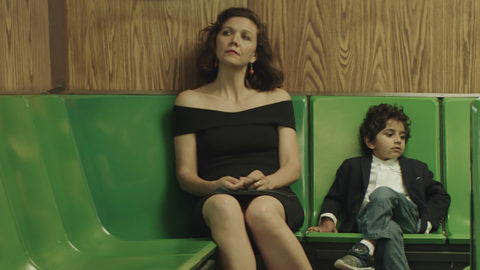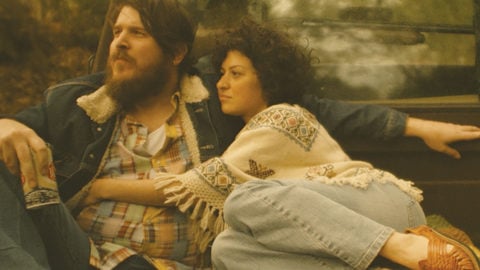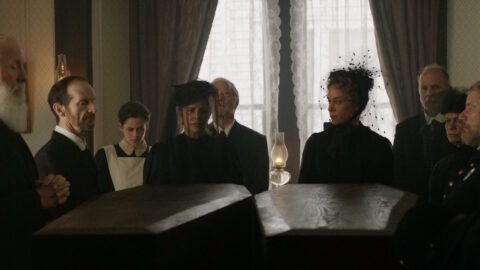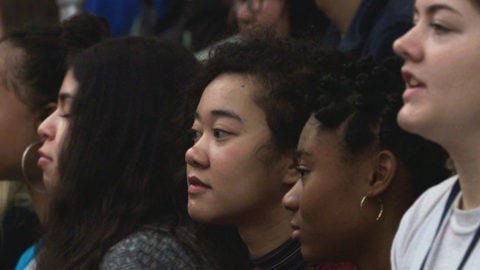Sundance Interview: RaMell Ross
Not all filmmakers have the language, or perhaps simply the desire, to talk about their work. Some filmmakers work in film because it’s the best, or perhaps only, language they’ve found for what they mean to express, and struggle to meet the demand—from journalists, from programmers, from the public—to translate that meaning into words. RaMell Ross doesn’t have that problem. Not because he’s got it all figured out—in fact, based on his work, he would seem to be allergic to the notion of having it all figured out. But rather because when he speaks he gives one the sense that whether it’s language, or imagery, or sound, or emotion, everything has infinite potential while nothing can ever be enough. A former basketball player turned acclaimed photographer, a late-blooming student turned Ivy League professor, a recipient of the Sundance Documentary Film Program’s prestigious Art of Nonfiction fellowship turned—thanks to Hale County This Morning, This Evening—2018 Sundance Special Jury Prize-winning filmmaker, Ross keeps it moving. His film is a documentary truly unlike any other, pursuing a durational commitment to place (Hale County, Alabama) and subject (Quincy Bryant and Daniel Collins along with their families and friends) yet representing it fragmentally; rejecting traditional narrative structure but replacing it with his own rigorous formalism, with moments that progress relationally, metaphorically, intuitively, aesthetically.
Ross served as a basketball coach and GED instructor during the years he lived in Hale County, and developed intimacies with his subjects that made filming their lives organic to the experience of being with them. After the film’s premiere at Sundance, he said he had ”wanted to make a film that was made up of moments. Made up of the sort of beautiful nuances that are banal and epic simultaneously, that every person in the world has and participates in.” While there’s something universal about that ambition and those experiences, there’s also something radical and political about pursuing it in a community that’s predominantly black and poor—a community that’s thus only ever seen in terms of its impoverishment and disenfranchisement. “It’s not typically the way we look at our community,” he said, “but through that commonality of profoundness that everyone knows, there could be a different way of looking at what it’s like to be a black person in the South, as well as looking out, centralizing our experience there.”
In the below Film Comment interview, we explored that heady and frankly exhilarating dual vantage—a looking at a community simultaneous to a looking out from it, seeing overlaid with being, objectivity bleeding into the subjective.
[Hale County This Morning, This Evening will screen April 7 and 8 at New Directors / New Films 2018.]
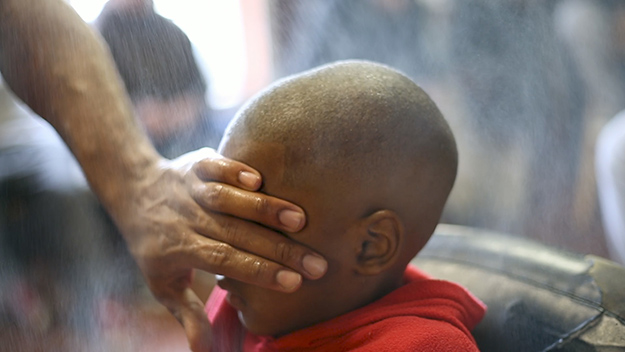
Being that you come from photography and this is your first film, I couldn’t help but feel that, in addition to your opening my eyes with your imagery, your eyes were also widening with newfound love for the moving image.
It’s definitely true. Someone asked me what my film language was and I was like, “It’s growing, I don’t know.” I don’t know what my full photographic language is because it has to evolve. I could never make this film again. There was this vulnerability, and also a naiveté that I had. I look at films like Tree of Life, and I’m like—no one would ever give a black filmmaker X millions of dollars to do something that no one understands what he’s doing. It just doesn’t exist. But I was like, all right, I’m going to leverage my entire life to just be part of this world and continue to be friends and make this film, and chisel the shit out of something.
And that something couldn’t be traditional in form.
I couldn’t make a traditional documentary about them because of [traditional documentary’s] inability to say something new about them. How could I pull the veil off of someone’s—and this is [W.E.B.] Du Bois’s language, he always talks about pulling the veil—how could I pull the veil up and down during a film? To let someone see the way that they’re seeing. Because I think that’s almost the action that will save humanity. If we can see how we see, if we can understand it’s not us, it’s something larger at work on us—that’s almost the thing that will let us all live in synchronization with each other in the world. It started from photography, because all I learned from photography was very much about the plurality of looking, which comes from growing up in the white community and the black community—you have preconceptions, you don’t have preconceptions. I guess it is me figuring out my language.
How did you come to photography in the first place?
I played basketball for a while and only did basketball. I was sensitive and saw stuff, but I was obsessively, and almost self-defeatedly, driven. So I didn’t investigate myself as much, only through the ball and the court and my body. So once I realized that wasn’t going to happen, I felt so far behind other people. The camera became a tool for me to catch up, to understand how I am and where I came from and what the world’s like. And then, when that happens, you understand that the material itself, or the photograph itself, is actually the power. It’s intertwined with everything that you are trying to learn. It’s not only a window, it is the medium, like the Marshall McLuhan thing basically.
Why was picking up a camera your first move?
When my mom died, I picked up the camera. I was a fifth-year in college and…
Fifth year because of your basketball playing?
I played a little bit my freshman year, broke my foot twice my sophomore year, dislocated my shoulder my junior year, dislocated my other shoulder my senior year, so I was red-shirted those three. Then I played in my fifth year, but she died in the middle of that. I was the sixth man, and kind of doing well—but I kind of took myself out of it after that. Then I took a photography course and once again, I had control. Not that I had control before, but I felt like I did. I took a picture of some guy walking down the street with smoke coming up, and everything was fascinating. There was something existential that I could relate to whatever I was feeling about my mom. Then I actually saw that I could make things that people said looked decent. So I just kept doing it.
You were talking about the Du Bois concept—lifting and lowering the veil. How does that make its way into particular images?
It’s consciously using black skin as content. I really like the opening scene of Quincy rapping in the car, because it’s a guy rapping, and you turn the camera and you see Dimitrius, who’s walking out and he gives you a really weird look. Then someone else gets in the car and he looks at you a little bit weird, and then we cut immediately to this girl playing with her hair in church. It makes you aware of the way in which black people look at you and you look at black people. But it’s literally him looking at me getting in the car. There’s nothing sinister. Dimitrius always has this mug on his face. But because it’s fractured you don’t have anything larger to attach it to. You’re forced to just contend with whatever you feel is happening in this short amount of space. Then in the locker room scene, the veil goes up and down the entire time. The guys are fighting, but they’re not fighting—they’re playing. There’s this love and this tenderness, and this aggression. But it’s literally every locker room in the country.
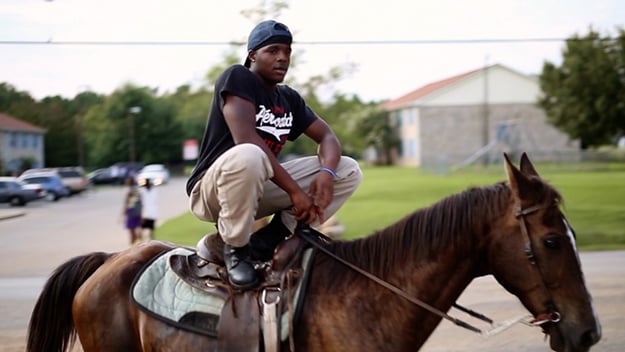
Seeing and being asked to see the way we’re seeing—how did that play out for you in recording these images? Were you thinking of your own objectivity and subjectivity in the moment, did you toggle between these notions? You were an outsider but also working toward seeing from the inside, to offer external points of view through looking.
It’s very much [been] a discovery for me. How do I see, how does this work, what do I understand, and what are the limits of understanding with whatever I’m capturing? I’ve come to believe that the only way to objectivity is through subjectivity, because there ultimately is no other way for a human to be conscious in the world. We have to see through our own eyes, and to follow that truth, but simultaneously be Socratic about it, because following your subjectivity can be misleading, can be a red herring. It gets really complicated, because how honest can someone be about something that they don’t know about, [relying on] capacities that they don’t really have?
Ignorance can limit capacity.
I see the film trying to be both objective and subjective at the same time, by participating in the moment honestly. If you’re not actually there to film people, if you would be hanging out with them anyway, then you’re less interested in capturing specific things and you’re more integrated in the natural flow of reality. If you’re really friends with them, if you guys have some sort of connection, if you’re not going to just fall off the map when the film’s done—that’s a way to collapse subjectivity and objectivity. See, I know the camera’s external, but so is a pen, and so is language. We’ve internalized it, and then it’s the way we think now. So I think there’s a relationship there between the way in which we are in the world, and then the way that we embrace means of communication. So, to some degree, the camera can become a pen, or the camera can become your wand. It can literally be part of your body.
It also makes me think of the dichotomy, but also potential overlap, of seeing and showing, because you’re simultaneously seeing through the lens and showing me something through what’s being captured.
What does someone normally look at? Because everything in the film is something that I look at. I’m interested in those things. Half of the footage is people’s hands doing stuff like this [gesturing] from really closely. If I didn’t have the camera, it would be less reasonable for me to come to this side of you [moves next to me, but slightly behind] and sit here. But because I’m filming you, I can actually see things from that perspective and somehow translate it. I genuinely love the way that the body manifests anything. It’s so fascinating. How do you read what’s going on inside based on what’s going on outside? That’s all we have. I like staring.
That’s all also related to the notion of seeing something for what it is and seeing something as representational, which I think is also, at least, being provoked by what you’re doing. Of course you’re looking at things that you’re interested in, but when I look at it, there’s always the possibility that I am seeing it as representational of something—meaning I’m bringing my own relational assumptions into it.
We’re meaning-making machines, and so giving someone—especially as it relates to black culture—a space to make meaning in black culture is to show you the mirror of racism. I very much came to see the film as having a double consciousness in the way that Du Bois talks about that. In one of his books, Darby English said that in order for black work to escape the label of blackness, it needs strategic formalism. It needs something that’s beautiful enough for it not to be reduced. So I’d very much felt that, okay, this [film] has all of the beauty in the world, and all the meaning in the world. There’s no way that this is a black film—this is a film. This is it. This is an experience. And it’s made by this person.
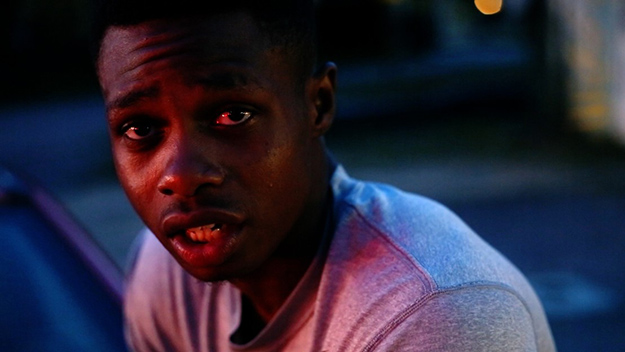
Yet beauty is one of the hardest-to-define terms there is. I’m interested in how you subjectively define that, how you experience beauty, and how you’re letting that be your guide.
Beauty being my guide is to acknowledge that that’s truly what everything is, and we are conditioned to strip away beauty to exist in the world in a way that’s efficient and productive. Because we’re so conscious, and so rational, I don’t know how we can indulge in the beauty that is around us on a momentary basis without just stopping on the spot and staring up at the sky. We’re conditioned away from instinctual existence, in a way. So there’s very much a lack of inside-looking beauty in black culture or black cinema because most people have been looking from the outside. People tell me, “Oh, the film is so beautiful! Could you give me advice on, like, how do I talk to people to shoot with this eye?” And I’ve been like, to be honest with you, that’s just the way I see Hale County and my friends. If I had some advice for you, it would just be to give people in those communities cameras, and then tell them the trappings of traditional ways of looking, and they would do the same thing. It’s not rocket science at all.
But you’re not just anyone capturing inherent beauty, you’re an artist rendering it uniquely and personally.
That’s very true. But I guess the way in which I talk about beauty in the black community, it’s very much a political statement. Yeah, I do know that I have a unique way of looking at things, just because some of my images I haven’t seen in other places. But I think there’s perhaps a million versions of that. There could just be a larger archive. Now, I don’t like to film certain things. Like a cotton field—I had a problem filming it. It’s like a platitude, it’s dead. But Maya [Krinsky, his close collaborator] convinced me to shoot it, saying, “You won’t shoot it like other people.” It’s using the same language, but rearranging it from your own subjective point-of-view to get to a more objective—for lack of a better word—way of seeing things.
Your film doesn’t follow a recognizable set of rules, particular in terms of plot or character development. Did you have your own guidelines for constructing the film?
There are very strict rules in that there’s no real scenes. The associative editing, from what I’ve been able to acknowledge, exists in four ways. One is [suggesting a] clear conceptual meaning, a clear conceptual relationship [between images]. Another is about color. Another is about the movement of the camera, the movement of what’s happening from one frame to the next. The other is metaphorical through montage, some quick juxtaposition that provokes something.
Considering the different directions you could have gone in, why make a documentary, and why bring it to Sundance instead of presenting it in an art world context?
I was really insistent on using the documentary brand. I wanted that truth. I wanted that import. One of the big things that this [Art of Nonfiction] fellowship provided for me was an understanding of the conscious landscape of documentary film. I had to figure out what people were receptive to and what people weren’t receptive to, so then the film could be crafted in a way, to the best of my ability and the best of my team’s ability, to be received and not dismissed. I think we got really lucky based on the response, but it was conscious. We wanted this to be what it is.
What could have been dismissed about it? In terms of it being too experimental?
Yeah. If the film gets labeled as an art film, as an installation film, then people don’t think of it as being a real way of looking at people, or a real way of looking at the world. Or if people think it’s too fractured to represent what it is to live a life. But when I think about my life, I think of it in pieces that are connected through really weird and beautiful things. We take pieces of our day and stitch it together, and that’s what our day means. And that’s how we dream. But also the conventions of narrative exist in some of the frames, completely. Like Kyrie [Quincy’s baby son] running back and forth, back and forth—that could be the entire film. The scene in the locker room—that’s a microcosm for a film. The narrative is in pieces, but [those pieces are] full and rich and we can relate to them. And they are magnified.
You show us a moment, and in that moment we can see both an entire life and an echo of our own.
I feel like if someone goes into the film open—if someone goes to anything open—they learn something about themselves.
Eric Hynes is a journalist and critic, and Curator of film at Museum of the Moving Image in New York.



